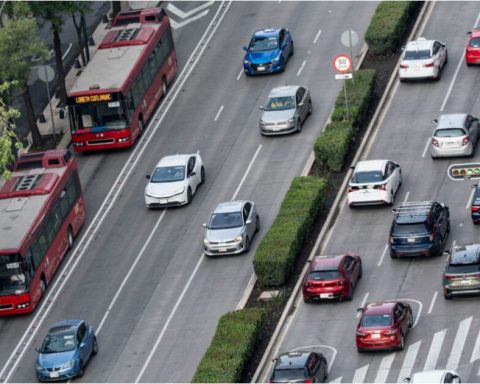Mexico is at an intermediate level, on the low side of vulnerability in regards to digital fraudaccording to the Global Fraud Index recently published by Sumsub, an identity verification platform.
The index is the first to offer a comprehensive analysis of digital fraud risk across 103 countries, revealing underlying factors that influence fraud levels. In the case of Mexicothe total score of 3.44 places it above the world average of 3.12, placing the country in a position of moderate risk regarding digital fraud.
According to research firm Juniper Research, global losses from online payment fraud are estimated to exceed 362 billion dollars between 2023 and 2028.
Moderate resilience
Mexico is in the middle of the global index, with a score of 3.44. This is significantly lower than the score of Argentina (5.34), which leads the Latin American region in fraudulent activity, but is above other safer countries such as Canada (1.98) and Chili (2.51).
Among the countries most protected against digital fraud globally, Singapore ranks first, followed by European countries such as Luxembourg, Swiss and Norway. These countries combine high levels of economic wealth, access to resources and efficient government systems, which translates into better protection against fraud.
In contrast, the most vulnerable countries, such as Argentina, Brazil, Ukraine and Pakistanpresent economic and political conditions that allow greater opportunities for fraudulent activities.
In Latin America, Brazil and Argentina They top the list of countries with the highest digital fraud activity, surpassing Mexico. This shows that, although Mexico faces moderate risks, the situation is even more critical in other parts of the region.
Fraud intent
One of the main categories evaluated by the Fraud Index is the “Fraud Intent” or Fraud Intent, which measures the frequency of fraud attempts or the perception of risk in a country. Mexico has a score of 0.88 in this category, higher than the global average of 0.77, but significantly lower than Argentina (2.65) and Brazil ( 1.87). This suggests that, although fraud intent is a relevant problem in Mexico, it does not reach the alarming levels observed in other Latin American countries.
This index reflects that Mexico has certain measures and barriers to control online fraud, which partially limits the impact of attacks. In comparison, Chile stands out with a much lower score of 0.26, indicating a safer and better controlled environment in terms of digital fraud. This performance of Chile contrasts with that of Mexico, revealing areas of opportunity to strengthen protection against fraud in the country.
Resource availability
Another key pillar in the Fraud Index is the accessibility to resourceswhich evaluates access to technology, financial services and infrastructure. Mexico has a score of 1.51 in this category, close to the global average of 1.32, which places it in a good position in terms of access to resources necessary for economic development.
This score is similar to that of Argentina (1.51) and Colombia (1.54), indicating moderate competitiveness in the region in terms of resource availability.
This accessibility allows the country to develop better tools and strategies to mitigate the risks of digital fraud, especially in financial and technological sectors.
In comparison, Chile has a lower value (1.29), which could indicate certain challenges in the accessibility of key resources for fraud prevention. The position of Mexico suggests a relatively solid infrastructure compared to other countries in the region, which is favorable for creating a safer environment in the digital economy.
Government intervention
Regarding government intervention, Mexico has a score of 0.63, just above the global average of 0.58. This level of intervention is moderate compared to other countries in the region such as Colombia (0.67) and Argentina (0.65).
According to Sumsubgreater government intervention may be useful to establish regulations and controls that help mitigate the risk of fraud; However, excessive control can also limit the flexibility and dynamism of markets.
Compared to countries like Canada, which features minimal government intervention (0.19), Mexico has a more controlled approach that could be linked to the need to regulate the market and ensure economic stability.
However, this intervention is minor compared to the restrictive policies of other countries in Latin Americawhich could offer greater adaptability to the economic environment, although it could also allow certain gaps in anti-fraud regulation.
Economic health
The last pillar of the index is economic health, where Mexico has a low score of 0.41, compared to the global average of 0.45. This score reflects economic challenges that affect stability and growth, placing Mexico in a vulnerable position in this regard.
This rating is similar to that of Brazil (0.51) and is below that of Colombia (0.58), which shows that Mexico faces a fragile economic situation in the regional context.
Mexico’s low score in economic health could be related to inflation problems, slow economic growth and challenges in job creation. In comparison, countries like the United States, which have a more robust economic index, tend to face fewer risks of digital fraud, as a healthy economy can reduce the pressures that drive fraudulent activities.
Mexico has a mixed profile
The profile of Mexico in the Global Fraud Index It’s mixed. Its moderate position on fraud intent and resource accessibility reflects relative strengths, while weak economic health and intermediate government intervention pose challenges to its development.
Mexico does not face the critical levels of risk seen in countries like Argentina and Brazil, but it also does not show the strength and stability of highly protected countries like Canada or Singapore.
The Global Fraud Index, developed by Sumsub, is based on internal data from more than one million daily verifications and other external data, focused on the period 2023-2024. The index methodology analyzes four pillars: fraud rate, accessibility to resources, government intervention and economic health, which are related to the “Fraud Triangle” model and reflect factors such as pressure, opportunity and rationalization. These elements allow us to evaluate the level of risk of digital fraud in each country.
rrg















